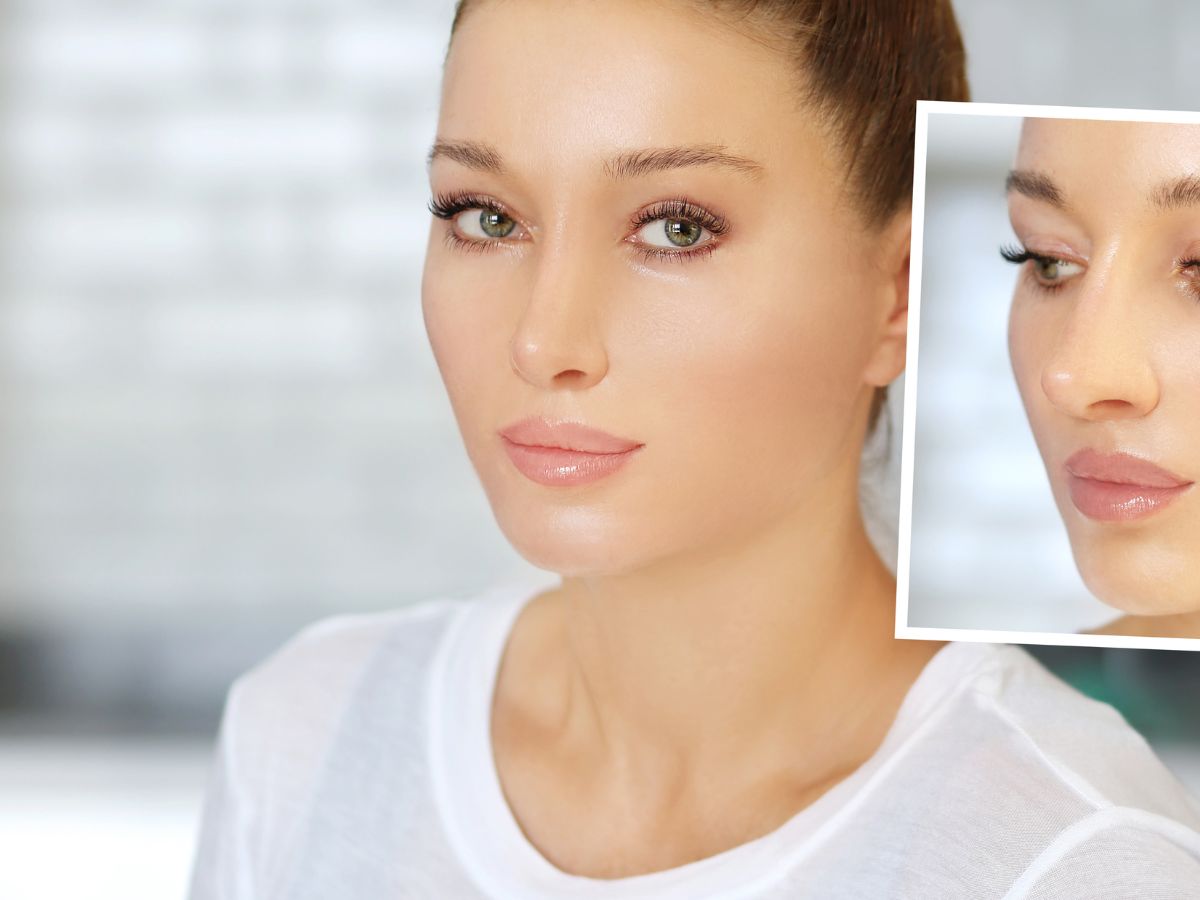LIQUID RHINOPLASTY
It’s all the craze now! Change your nose without surgery and at a fraction of the cost. Almost sounds too good to believe.
Every day, thousands of men and women trek to the offices of dermatologists, plastic surgeons and health spas alike to have hyaluronic gel based filling material injected under the skin to improve their nasal shape. So are these treatments all that they are advertised to be? Can they really help patients? The answer is yes but the answer is also that things are a little more complicated than just a simple yes. So let’s parse out the pluses and minuses of using fillers to improve nasal shape.

First, let’s talk about the average patient seeking rhinoplasty-or as is commonly referred to a “nose job”. Plastic surgeons hear similar observations from their patients including “my nose is too big” and “I got my dad’s nose”. They also admit they don’t like the bump on the bridge of their nose. And yet another astute observation patients make about their nose is that their tip either sticks out too far or is too wide.
Hyaluronic acid fillers can be injected under the skin both above and below the bump on the bridge of the nose to hide it and make the bridge smooth. But since fillers have volume themselves, injecting fillers makes the nose larger- when the patient really wanted to have a smaller nose in the first place! Likewise, fillers can be used to refine the tip but at the expense of making the tip larger and more prominent.
Another issue in the bump area is that most patients who have a prominent bump on their nose also have a wide nose. This excessive width is caused by wide nasal bones. And, as one might imagine, fillers can not narrow this excessive width. The bottom line is that patients want their nose to be smaller but they want all of the parts to harmonize with each other and relate to each other and that simply cannot be done by adding volume to the nose with fillers. So one might imagine that when a patient comes to the office of a plastic surgeon, the surgeon will recommend a rhinoplasty for the best result. But when they go to the office of a dermatologist or a spa, they will get a filler. It is as simple as that. It is also unfortunate for patients that should they go to a plastic surgeon that was trained to perform rhinoplasty but does not current do rhinoplasty, the patient will be likely recommended a filler instead.
That is why it is so important for patients to find out at their initial consultation, what the treating person’s “scope of practice” is. In other words, does the treating person only do filler for all persons walking into their office? Or do they have the ability to do both filler and rhinoplasty surgery so they are not biased in their recommendation? And if they don’t do rhinoplasty and only do fillers, do they refer the patient to a plastic surgeon for rhinoplasty if that is the best choice? Patients must do their homework, unfortunately, to ensure they get the best treatment they can get because the results of rhinoplasty are permanent, and the results of liquid rhinoplasty can be long lasting.
When one looks at how long fillers can last when used in the soft tissue of the cheek and mouth area, the material generally lasts about a year with current technology. However, when hyaluronic acid fillers are placed over bones such as the nose, they can last two or more years being placed next to this hard surface. That can be good in terms of prolonging a happy result. But when patients don’t like the results of their filler procedures, they may have to wait 2 years or even much longer for the filler to break down naturally to see their original nose. Many patients who want to get rid of their filler can have an enzyme called hyaluronidase injected to break down the material but sometimes the enzyme is not able to remove all of the filler. In addition, patient who were not happy with their filler seek consultation with a plastic surgeon for surgical rhinoplasty and have a difficult time getting a nose job because the filler has caused these and other problems. Patients who seek consultation for cosmetic fillers to the nose are generally not aware of, nor are they generally told that injections about the nose can, very rarely, cause blindness. Again, the most important issue is that all of the alternatives to treatment must be discussed including the benefits and risks of each treatment option.
So one might ask, “If fillers are not the best alternative for the average patient seeking rhinoplasty, what patients are better off treated with fillers?” When patients are bothered by a small bump on the bridge of their nose and the other parts of the nose are aesthetically in good shape and go together, filler might be a good option. Another patient that might benefit from the use of fillers is one with a recessive tip that might be built up. But the problem here is that that patient with recessive tips often have other issues with their nasal appearance tat is better addressed with surgical rhinoplasty.
Another patient who might benefit from liquid rhinoplasty is one who has already had a surgical rhinoplasty but has a minor issue from the surgery such as a bony asymmetry where that defect could be improved with the use of a filler. Plastic surgeons are constantly trying to improve on their cosmetic results and so careful postoperative feedback and observation is important for this constant improvement. Should modification be needed and recommended after surgical treatment, fillers can be used to rescue even an already good cosmetic result.
